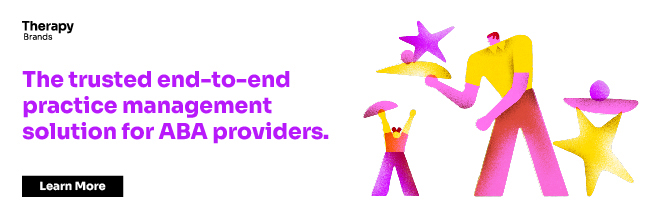In the webinar provided by Stall (2018), she provided real-life examples of shared challenges experienced by some of her clients during the enrollment process, as well as strategies to reduce future occurrences of similar issues. The list below includes errors commonly made during the credentialing process, which contribute to delayed services for clients.
Common Provider Issues
- Inaccurately entered provider data
- Missing information such as educational history or clinical work history
- Outdated certifications or licenses
- Failure to provide proof of liability insurance
- Background check delays
- Lack of practice management tools for tracking the healthcare credentialing process
- Lack of staff available to manage and perform the credentialing process
Mistakes Overflow Contributing to Delays
For ABA providers to enter the enrollment phase smoothly, credentialling mistakes will need to be minimized, if not eliminated entirely. If mistakes were made and not corrected during credentialing such as data inaccuracy, incomplete forms, or outdated provider information, these inaccuracies will overflow into the contract and enrollment phase (Stall, Therapy Brands webinar, 2018).
Save Time and Strive for Clean Claims
Putting in a little extra time up front can save a lot of time and headache later. This is especially true when submitting claims or credentialing forms to a payer. ABA providers who enter subsequent phases and are collaborating directly with the payers will experience more substantial delays in the overall enrollment and healthcare credentialing process. It could be difficult to schedule convenient times to review the denied claims with the payers, which was exasperated during COVID-19 as many began working from home. Providers typically need to gather additional information before correcting claims and send it back in for review, which can extend the process greatly if both sides are short-staffed. Credentialing errors can easily seep into the next phase of the process creating significant barriers, which is why it is vital to evaluate mistakes and prevent the same or similar mistakes from occurring in the future (Stall, Therapy Brands webinar, 2018).
Strategies to Overcome Additional Credentialing Issues
Below are a few practical and forward-thinking solutions for ABA providers to consider implementing to remediate lengthy credentialing delays, frequent staff turnover, or potential monetary loss as suggested by Stall (2021).
- Licensing and contact information should always remain current
- Branch out by creating an in-house credentialing department or invest resources to outsource the work to an agency that has the tools and specializes in credentialing, contracts, medical billing, etc.
- Develop a system to remain up to date on special state compliance guidelines
- Invest in a credentialing system or make sure your vendor has the tools needed to accurately track the credentialing process
Armed with the knowledge of the overall credentialing, contracting, and provider enrollment process, ABA providers can confidently evaluate their internal systems and strategies and what tools and resources may work best to streamline the process within their agency. For more information on seamless credentialing, download our free ABA Billing 101: Credentialing, Contracting, and RCM KPIs Whitepaper.

References
• Stall, D., Brinkman, M., & Padula, N. (2021). Billing 101: Credentialing, Contracting andUnderstanding Eligibility by Therapy Brands. Presentation, webinar. https://vimeo.com/589418548
